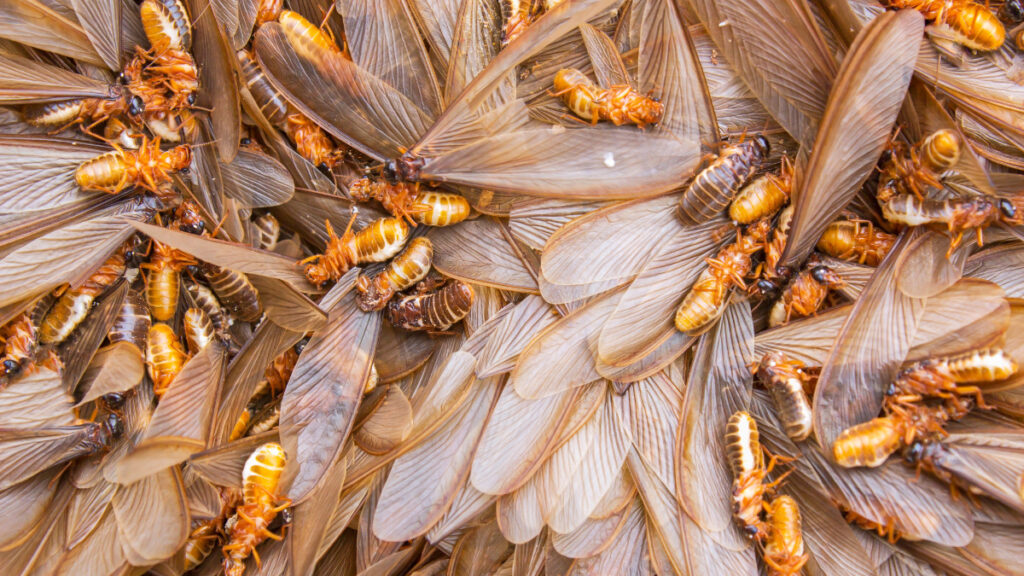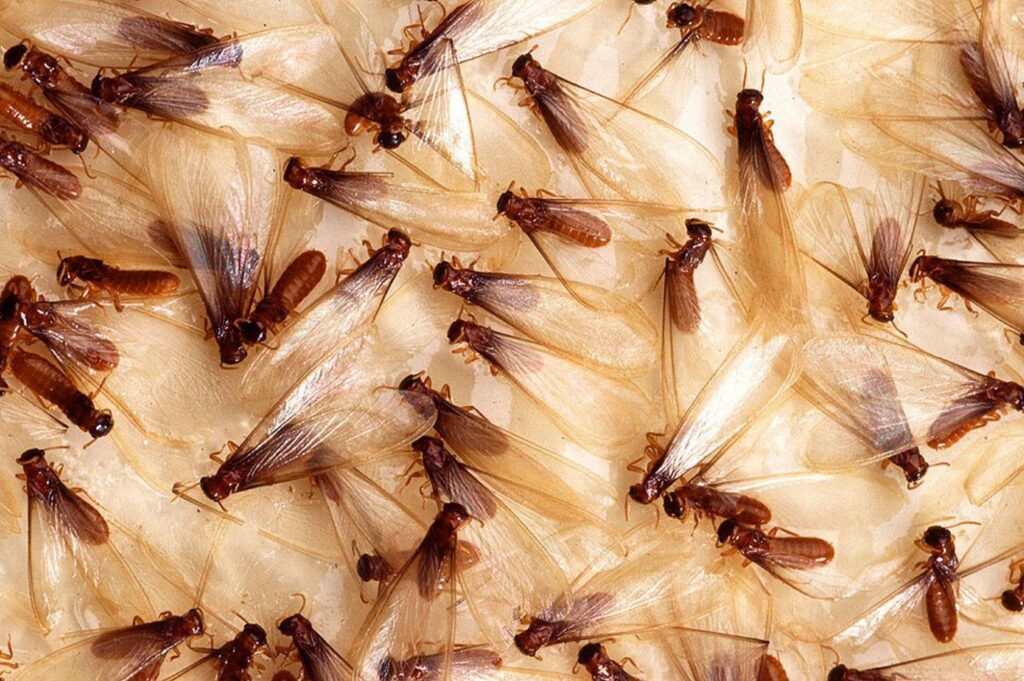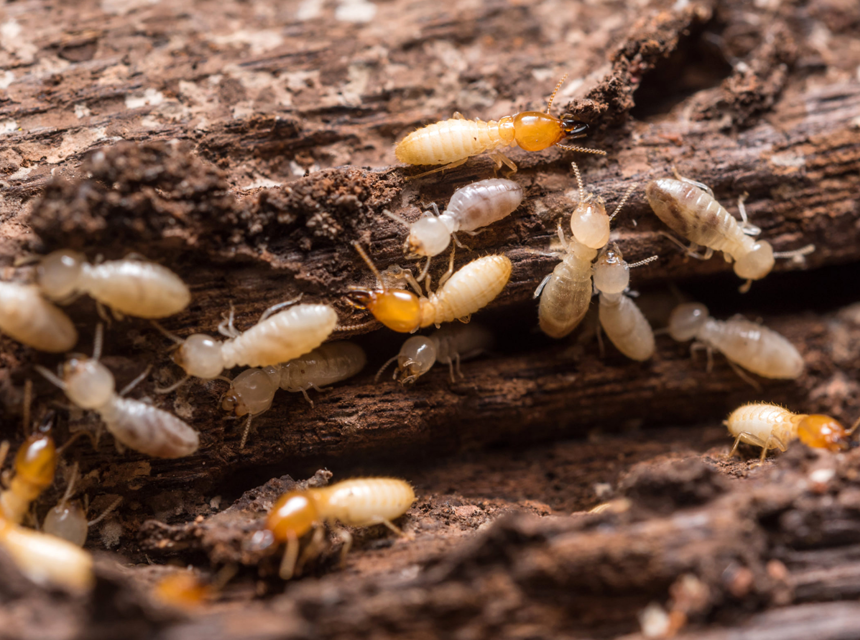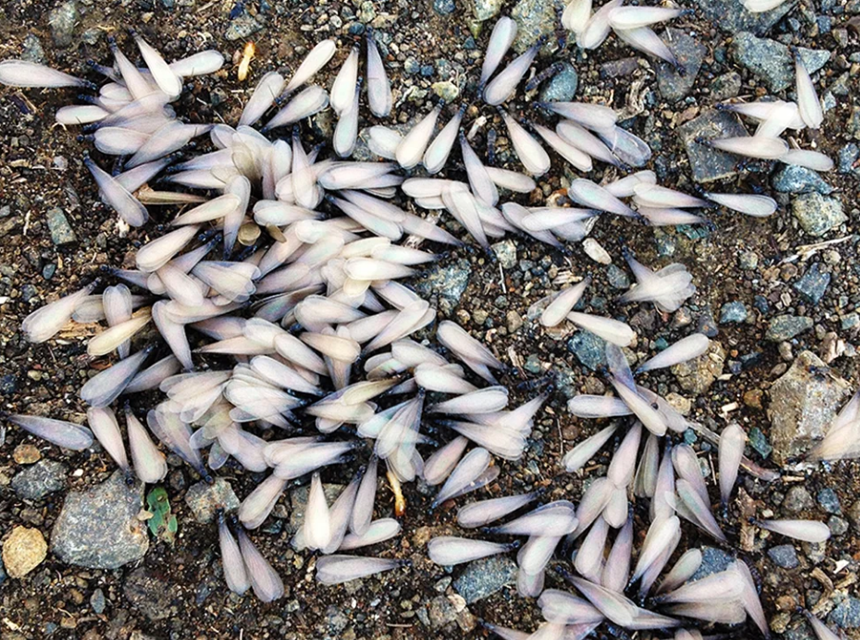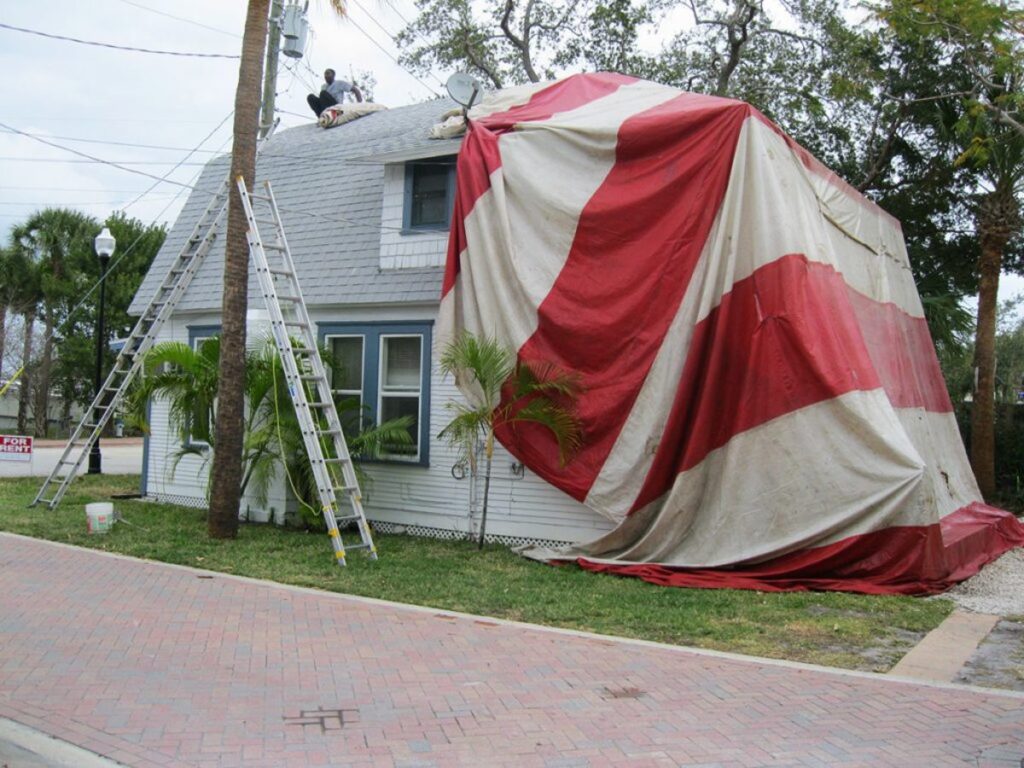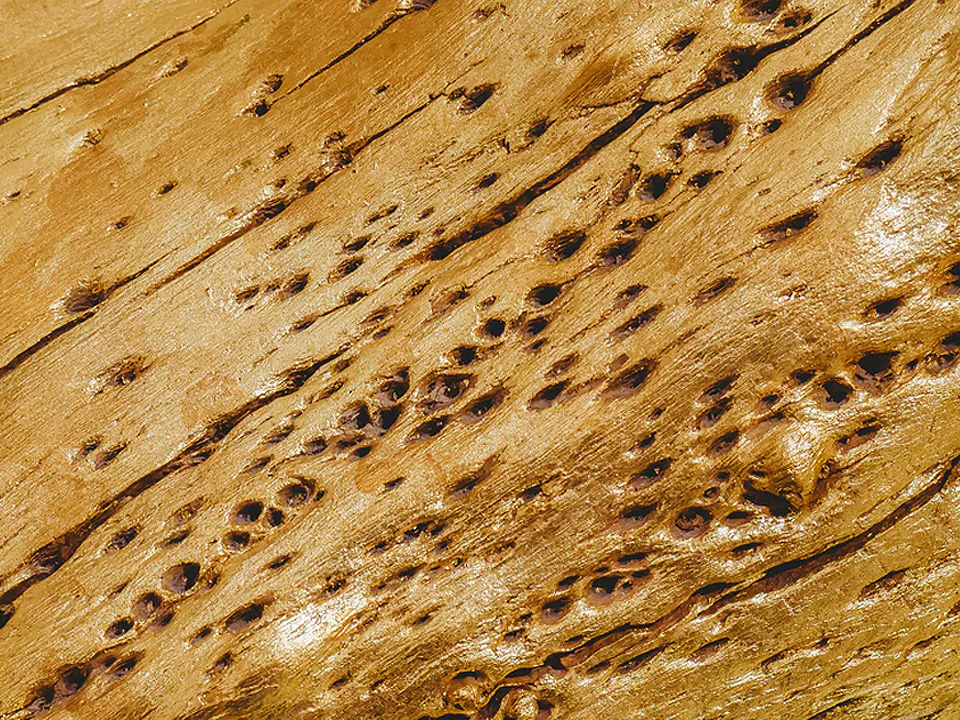

Termite infestations are usually not discovered easily, as the little creatures leave little evidence of their presence behind. However, it is not possible for there to be no traces at all. The most easily identifiable trace of a termite infestation is termite droppings. Once you find termite droppings in your home, it means you likely have an infestation.
Termite droppings can also be called “frass” and are usually found around wooden objects in the house. Drywood termite droppings are usually pushed out of tiny exit holes made by the termites inside the wood. What do termite droppings look like?
Termite droppings have a probability of being found anywhere there is wood. There could be termite droppings on window sills or doors. How do you know there are termite droppings in your house? Termite pellets have an oval shape and six concave sides. They can be easily mistaken for sawdust or pepper.
There are different species of termites with slight differences in their droppings. The types include dry wood, damp wood, and subterranean termites.
Termite droppings tend to take the color of the type of infested wood. It could be black termite droppings or white.
If you see a small pile of tiny pellets of about 0.04 inches next to your bed, window, or wooden frame, it is best to call a professional to identify whether you have an infestation or not. This is because sometimes there could be termite droppings but no termites. Images of termite droppings can help you differentiate better.
Frass termite droppings are tiny pellets excreted by dry wood termites and pushed out of the wood through termite holes. Since dry wood termites can find the necessary food they need in wood, the only thing they need to get rid of is frass. Drywood frass tends to look similar to sawdust due to the wood color.
All termite droppings come in the form of tiny pellets. Termite pellets are usually shaped like little capsules. The little insects push the pellets out of the wood and form a pile beside the wooden component. Hence, the reason why some people discover termite droppings from ceilings and windows in their homes.
Subterranean termite droppings are usually more challenging to discover than dry and damp wood termite droppings. The reason for this is that subterranean termites make use of their excrement to create mud-like tunnels around the nest. These excrement tunnels can usually be seen along walls of houses or around the foundation region.
Frass from carpenter ants and termites are similar in appearance, but unique characteristics tell them apart from each other. Carpenter ant Trusted Source Carpenter Ants: How to Identify and Prevent Them? Find out what carpenter ants look like, where they live, whether they are harmful to your health, what attracts them, and how you can get rid of them easily. www.webmd.com excrement is slightly bigger than termite pellets. They look the same, but termite frass has a much smoother feel than carpenter ant droppings.
Carpenter ant droppings also contain tiny body parts of other ants that their comrades have eaten.
Termites tend to scatter their pellets around the proximity of their nest. This is commonly seen on tables and other wooden surfaces.
Carpenter ants, on the other hand, leave their excrement directly in front of their colony. They can be controlled by using some of the best carpenter ant killers we reviewed.
For most people seeing termite droppings for the first time, it is very easy to confuse it for sawdust. Both termite pellets and sawdust come in similar sizes of around 1 millimeter. It is not easy to differentiate between the two, so the best option is to use a magnifying glass to identify what you see correctly.
Once you have a closer view, it is easier to know what is what. Termite pellets have hexagonal shapes with round ends, while sawdust looks like tiny wood shavings. Carpenter ant feces also look very similar to sawdust; sometimes, professional help is needed to identify the droppings correctly.
Upon discovering termite droppings in your home or when getting a new house, it is normal to be curious about whether the droppings found are new or old. Identifying the age of termite droppings is not easy as no evident characteristic differentiates whether the droppings are new or old.
Most old and unused buildings tend to have termite droppings, and you might want to know whether the building is still infested. There is no obvious way to discern this, and it is advisable to seek professional help to know the following steps.
The best place to find termite droppings are locations with wooden components. Termite eggs or droppings can be found around any house component made of wood. You can find termite droppings on beds or along wooden railings. You can also find termite droppings on floor finishings made out of wood.
Termite droppings can also be found in other locations like cabinets and wardrobes. However, unlike in the case of dry wood or damp wood termites, it is almost impossible to see feces from subterranean termites Trusted Source subterranean termite | insect | Britannica Other articles where subterranean termite is discussed: termite: Importance: Subterranean termites are dependent on contact with soil moisture and normally reach the wood in man-made structures through the foundations. The most common traditional control used around a structure is to flood a shallow trench with an insecticide and cover it with soil. Insecticides also… www.britannica.com . Their excrement is in liquid form and is used to build mud-like tunnels.
Termite droppings are not harmful to your health. According to studies, termite droppings pose no danger to human or pet health. The excrement of termites contains no toxic substances that can lead to health conditions. However, having termite droppings around the house is not convenient either.
In some rare situations, termite droppings can cause allergic reactions, especially with people who have respiratory conditions. This leads to the question on many people’s minds: How to stop termite droppings? You can get rid of termite droppings and termites in different ways, such as using insecticides.
The video below shows some of the most common signs of termites in your home, droppings included.
When you find termite droppings in your home, the best thing to do is seek professional assistance in diagnosing the situation. It is better not to dispose of the droppings before an expert takes a look. If you don’t want to seek an expert opinion, you can use some do-it-yourself methods.
According to reviews from experts, products like CimeXa Insecticide Dust and Termidor Foam are very effective against termite infestations. Spray-type insecticides are a better option if you’re looking for how to get rid of flying termites. However, it is still best to seek professional help when one finds termite droppings in their home or environment to avoid termite bites Trusted Source Do Termites Bite? Symptoms, Risks, Treatments, and Removal Termites feed off wood and live in dark environments. A noticeable bug bite is more likely to be from a different insect, but here's what you can look out for. www.healthline.com .
Termites are little insects that are often found where there’s wood. Once termites create a nest in any wooden home component, it is only a matter of time before you start seeing termite droppings around. Termite droppings look similar to carpenter ant droppings and sawdust, and it’s quite difficult to differentiate between them.
Termite droppings usually take the color of the wood the termites consume. Subterranean termites use their excrement to build mud-like tunnels that are usually seen on walls. If you identify termite droppings around your home, it is advisable to seek professional help.
